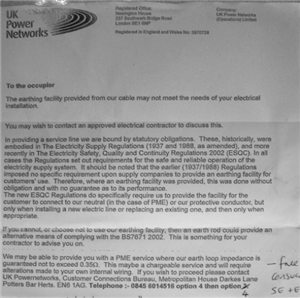Arran Cameron:
The problem with complex tariffs is that they become too confusing and difficult for most customers to understand - and utilise to their advantage with correctly configured timers and controllers.
Denis McMahon:
MHRestorations:
. . .
We have recently installed a couple of induction hobs that only required a 13A socket (they came complete with a plug ended flex and state a demand of 2.9kw.
. . .
It sounds like a good idea to have a hob that is portable and can be used in various parts of the kitchen - or house even. It shows that innovations can yield advantages beyond their original purpose. It would not be easy to have a portable gas hob and even with electric cooking, the idea that the hob and oven should be combined in one unit requiring a massive power connection persists.
Sparkingchip:
The new Zigbee enabled appliances and controllers will work alongside your smart meter to use the multiple tariffs to your advantage.
The place for a cooking hob is bolted down into the work surface in the kitchen with adequate ventilation.
People trying to cook in bedrooms in HMOs or for that matter homeowners or tenants trying to cook in any room other than the kitchen is a major safety issue and detrimental to health.
Arran Cameron:
Sparkingchip:
Electrium describe a Wylex eight way consumer unit with surge, arc protection and double pole RCBOs as the ultimate consumer unit.
Eight ways is more than enough for most homes.3 ring mains
Upstairs lights
Downstairs lights
Outside lights
Central heating boiler / electric water heater
Electric heating
Electric cooker - for when gas cookers are banned
Burglar alarm
More like at least 10 ways and that's before installing fancy accessories like kWh meters for individual circuits (itemise your electric bill), time switches, controllers etc.
Sparkingchip:
Based on the French system, having chosen your tariff based on the maximum demand you are prepared to pay the standing charge for the meter operator will set and seal your main switch, the disjoncteur d’abonne, to trip if you exceed your agreed maximum demand.
I'm surprised that nobody has mentioned universal provision of kWh meters for individual circuits in order to create an itemised electricity bill and find out exactly where the energy is being consumed.
Network operators will stop providing customers with an earth terminal for new properties, they will all have to be TT with foundation earthing.Why? I'm vaguely aware that in some foreign countries TT is the norm.
Because by then all the aluminium consac will be in such a state that the DNO will not be happy to offer a PME earth, and they will not wish to run an SNE cable just for one fussy customer who wants an earth termninal.
Then at least one well known UK DNO, sends you this letter saying they can no longer guarantee that the earth terminal they provide is any good.
The choice in the cases where they cannot offer PME conversion, is a reassuringly expensive bill to in effect pay for all or part of a new cable to the substation or go TT.
Mostly, folk with a limited budget go TT.
We're about to take you to the IET registration website. Don't worry though, you'll be sent straight back to the community after completing the registration.
Continue to the IET registration site